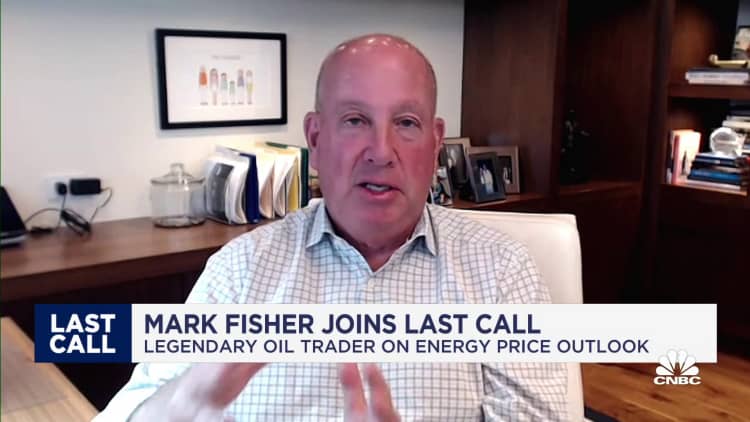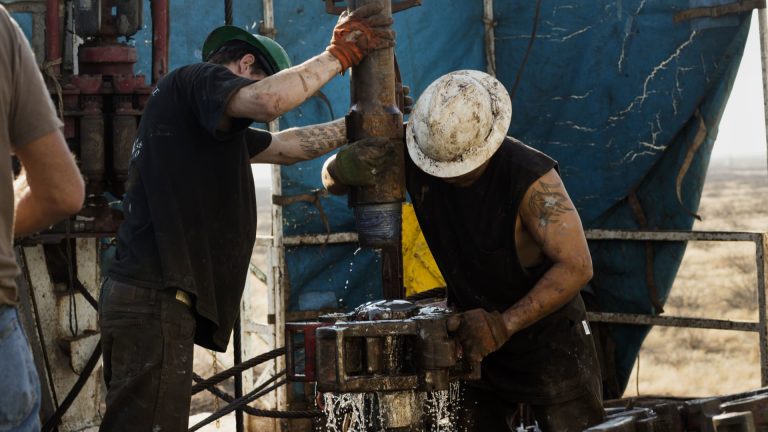After three and a half years, a tripling in the S&P 500 Energy Index, and many soon-to-be-forgotten culture-war volleys, the U.S. Department of Energy announced Oct. 12 that U.S. crude oil production had hit an all-time high of 13.2 million barrels per day, entirely wiping out Covid-era losses of more than 3 million barrels per day.
The news came a day after a $60 billion deal between Exxon Mobil and independent oil producer Pioneer Natural Resources. The combination of recovering production, sustained pressure from Wall Street for cost containment and high stock dividends, and consolidation like the Exxon-Pioneer hookup is not a coincidence.
The energy sector’s big stock move in 2021 and 2022 was mostly a recovery from a disastrous decade for Big Oil, when tens of billions of cash flow were lost on unprofitable fracking wells, and of a consolidation that was good for company profits, dividends and shareholder returns.
The foundation of the 2010s oil business was cracking when Covid broke it, said Rob Thummel, senior portfolio manager at Tortoise Ecofin in Kansas City, Mo. Monthly production topped out at 13 million barrels per day in November 2019 and hit 9.9 million by February 2021.
“Capital discipline in the U.S. industry hasn’t gone away, and oil is at $85 to $90 a barrel,” he said.
So, what brought Big Oil back, and what’s next?
Here are seven important factors that played into U.S. oil’s recent history and will influence its future.
Why the shale drilling bust ended
Oil broke gradually and then suddenly. The S&P 500 Energy Index lost 40% of its value between 2014 and 2019. But the pandemic drove the fast part of the bust, in part by leading Wall Street to insist on further cuts in capital spending, Thummel said.
What brought it back was renewed demand and higher prices.
Recessions end, and oil demand has slowly rebounded after the 2020 downturn and lingering supply-chain shock. And rising prices for WTI crude – which careened during Covid to less than $15 a barrel, shot back to $120 in 2022, and is now near $90 – can make previously-unprofitable plays work, he said.
The U.S. production rebound is more concentrated
Big Oil isn’t back all over America: Production is still down sharply in Oklahoma and North Dakota. It hasn’t changed much in Alaska, where production is in a long-term tailspin. And offshore oil drilling in the Gulf of Mexico recovered to 2 million barrels a day, but hasn’t grown.
Instead, the surge is concentrated in the Permian Basin region of Texas and New Mexico, where production costs are among the lowest in the country, said Alexandre Ramos-Peon, head of shale well research at Rystad Energy. Oil from the Permian Basin costs an average of $42 a barrel to produce, he said, with North Dakota in the high $50s to $60.
North Dakota is also hampered by weaker access to pipelines than the Permian Basin, where many producers can use pipelines that lie entirely within Texas, skirting federal regulation of interstate pipelines. That’s only one example of a relaxed regulatory environment in Texas, compared to places like climate-conscious Colorado, the nation’s No. 4 oil producer, where output is still down 3 million barrels per month, said Jay Hatfield, CEO of Infrastructure Capital Advisors in New York.
“There’s this place called Texas that doesn’t really know what energy regulation is,” he said.
Where oil companies have been spending their money
U.S. oil companies cut capital spending to $106.6 billion last year from $199.7 billion in 2014, according to Statista, contributing to the decline in oil production and arguably delaying the recovery. And they put that money to work paying higher dividends and doing stock buybacks, Thummel said.
According to Energy Department data, oil and gas companies paid out about $75 billion per quarter in the last year. The share of oil-company operating cash flow going to shareholders rose to half of operating cash flow from about 20% in 2019, the department says.
The link between Exxon-Pioneer deal and peak barrels
Offsetting the decline in capital spending is higher productivity per well — while all of the U.S. oil production is back, the closely watched Baker-Hughes rig count is barely half of 2018 levels. The average production per rig of new wells just topped 1,000 barrels a day, up from 668 four years ago, according to the Energy Department. So the industry didn’t have to add a ton of new wells or drill in as many new places to recover fully.
On CNBC last week, ExxonMobil CEO Darren Woods said the company did the merger because it thinks its technology and scale can raise the productivity of Pioneer’s fields.
“Their [Pioneer’s] capabilities, bringing in their Tier 1 acreage, our technology, our development approach, frankly, brings higher recovery at lower cost,” Woods said.
That suggests more mergers to come as rivals like Chevron also make plays to boost their presence in U.S. shale, especially in the Permian Basin, Hatfield said. Chevron already has made several shale-related acquisitions in recent years, including $7.6 billion for PDC Energy this year and $5 billion for Noble Energy in 2020. Independent producers are under more pressure than more-stable super-majors to pay very high dividends to justify the risk of oil-price fluctuations, which will mean tighter constraints on their ability to keep up in technology and scaling of operations, he said.
U.S. crude, energy security and Big Oil economics
As a result of the rebound in crude, is American repatriating its oil? A little, says Hatfield. Permian shale right now is much cheaper to produce than offshore oil, comes with much less political risk than offshore drilling in much of the developing world, and takes much less time to make a profit than offshore wells. That’s leading companies like Exxon to bet more heavily on Permian shale than offshore drilling, he said.
“The super-majors are taking capital out of offshore,” Hatfield said. “They are reducing overseas development because it is more risky.”
The biggest part of the equation is that time equals risk, Ramos-Peon said. Global oil producers aren’t squeamish about investing in parts of the world where governments change, but the years-long investment cycles in offshore drilling make the much shorter turnarounds in Texas appealing to companies like ExxonMobil, which is one of the industry’s biggest offshore players.
“In the Permian, you get your capital back in a little over a year,” Hatfield said. “The return on investment is much faster and much higher because the wells begin to produce so quickly.”
What oil’s recent trading and Israel-Hamas mean for gas prices
Gas prices tend to move in tandem with the price of crude oil, which has dropped to about $88 per barrel from $94 in September, driving a 20-cent per gallon drop in the nationwide average price for regular. But the influence of OPEC, whose coordinated production cuts in June have driven prices up 35 cents, often offsets what domestic producers do, Ramos-Peon said. And right now there is the added uncertainty of whether the Israel-Hamas war will result in a slash in production from Iran, whose government supports the Hamas rebels who launched bloody attacks into Israel, he said.
“I believe crude prices will stay around the current level in the short term, and in the long term should trend down,” he said. “If there are sanctions against Iran, that will be bad for consumers.”

Short-term shale plays, oil consumption and climate change
What’s good for oil companies in the short-term doesn’t change the longer-term trajectory of the oil market or carbon reduction.
Meeting climate goals has more to do with long-term shifts in energy use than with short-term production targets, Ramos-Peon said. Rystad expects U.S. production to rise to 13.6 million barrels per day next year and 13.9 million in 2025, he said. After that, forecasts get more difficult because so much can change, but by late this decade oil consumption should peak before beginning to ebb, he said.
Even as more cars go electric, demand from older cars and uses of oil in chemicals will keep the oil business very large, Ramos-Peon said. And the risk that the business will erode will make drillers focus on shale more than offshore drilling, Hatfield said
“In the context of not knowing for sure, why wouldn’t you want a return on your investment in three years rather than 30?” he said.
Short-term, the biggest threat to the rosy scenario is that oil-industry cash flows are falling sharply from a peak last year. The Energy Department says its survey of 139 producers, foreign and domestic, shows a 36% drop in second-quarter operating cash flows from 2022. Profits are narrowing for the first time in two years, the department said.
Then again, the price of crude has risen $16 a barrel since the end of the second quarter. And in the oil business, price rules everything.
Read the full article here









